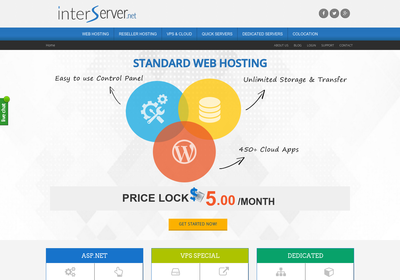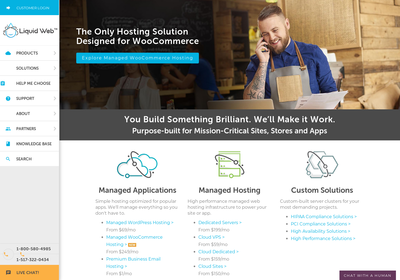Oops! No Hosting Plans Match Your Search
You’ve selected a combination of features that none of the web hosts we profile offer. We suggest you remove your last filter or reset & start again.
Ask Our Experts
Need help with your hosting? Tell us exactly what you are looking for and we’ll do our very best to help. Please allow one working day for a response.
Please fill in all fields.
Thanks! Your request has been sent. We’ll reply within 24 hours.
Recommended Host for Movable Type

 Prices in are approximate, based on current exchange rates. The host will likely charge you in USD, or at a different exchange rate.
Prices in are approximate, based on current exchange rates. The host will likely charge you in USD, or at a different exchange rate.
 Prices in are approximate, based on current exchange rates. The host will likely charge you in USD, or at a different exchange rate.
Prices in are approximate, based on current exchange rates. The host will likely charge you in USD, or at a different exchange rate.
 Prices in are approximate, based on current exchange rates. The host will likely charge you in USD, or at a different exchange rate.
Prices in are approximate, based on current exchange rates. The host will likely charge you in USD, or at a different exchange rate.
 Prices in are approximate, based on current exchange rates. The host will likely charge you in USD, or at a different exchange rate.
Prices in are approximate, based on current exchange rates. The host will likely charge you in USD, or at a different exchange rate.
 Prices in are approximate, based on current exchange rates. The host will likely charge you in USD, or at a different exchange rate.
Prices in are approximate, based on current exchange rates. The host will likely charge you in USD, or at a different exchange rate.
 Prices in are approximate, based on current exchange rates. The host will likely charge you in USD, or at a different exchange rate.
Prices in are approximate, based on current exchange rates. The host will likely charge you in USD, or at a different exchange rate.
 Prices in are approximate, based on current exchange rates. The host will likely charge you in USD, or at a different exchange rate.
Prices in are approximate, based on current exchange rates. The host will likely charge you in USD, or at a different exchange rate.What is Movable Type?
Movable Type is a popular and powerful blogging and content management system that combines ease-of-use with first-class development features. Before Blogger, before WordPress, Movable Type was one of the first blogging platforms that brought professional level content management to the masses. Most people didn’t even know what a blog was back in 2001 when the first version Movable Type was released by web development company Six Apart.
Since then, Movable Type has been through a half-dozen releases and has become one of the most popular proprietary (closed-source) blogging and content management platforms available.
Movable Type has a strong focus on commercial and enterprise level users. It runs high-powered sites for a number of Fortune 1000 companies, including the Huffington Post.
At the same time, Movable Type can be used by smaller businesses and organizations that want a serious, well-supported content platform with feature depth and wide support.
Movable Type Development Focus
The development team behind Movable Type focuses their effort on four key aspects of the platform:
- Stability
- Movable Type uses server-side scripting to create static pages, combining the flexibility of dynamic content management with the performance and stability of pure HTML.
- Flexibility
- Movable Type has an easy-to-use templating system that is as simple as writing straight HTML, but with intuitive include and variable capabilities. Somewhat uniquely, functional code can be written in multiple languages: Perl, PHP, Ruby, etc.
- Scalability
- Most websites slow down as they grow, consuming more and more resources as the content expands and the user base increases. A single installation of Movable Type can power an unlimited number of individual blogs and websites with an equally unlimited number of users, all while keeping page load times fast.
- Extensibility
- Movable Type is a content management system with a data structure that makes sense and has been field-tested for almost 15 years. Everything else is modular. Robust hook and filtering, and a rich Data API, make the platform easy to extend for any content-driven purpose.
Key Movable Type Features
Movable Type is extremely feature-rich, designed to make content management easy for companies willing to pay for a first-class web content platform.
Dashboard and Admin Features
- Integrated display of Google Analytics stats
- Recent activity from all Blogs and websites
- User stats and profile info
Content Management Features
- Unlimited Blogs and Websites
- Multiple Content types: pages, articles, posts
- Custom Content Types, with custom data fields
- Pretty URLs
- Folders, Categories, and custom taxonomies
- Content Versioning, with revert capabilities and diff viewing
- Scheduled publishing and content expiration
- RSS
- Built-in search engine
- Commenting
Content Creation Features
- Content can be parallel-published in multiple languages
- Autosave while authoring
- Quick preview
- Create from anywhere with browser bookmarklet
- Batch editing of tags, titles, dates, categories, etc.
- Post from email; accept content from public email.
- Setup default data for fields, statuses, and format
- WYSIWYG Rich Text Editing
- Typographical Symbol replacement
- Custom fields
- Custom template tags
- Require fields
- Easy file and media upload and embed
- Image editing and resizing; auto thumbnails
- Media asset library
- Data API: Create, Read, Update, Delete Content
Templates and Theming
- Template files are separated from programming logic.
- PHP, Perl and other programming languages allowed in template files.
- Easy-to-use, but completely functional templating language
- Tag output format modifiers
- Template version control, with comments, revert, and diffs.
- Publish dynamic or static pages
- Automated backups
- Clone and export templates.
- Templates for archive and category pages, and other “lists†of content
- Templates for email
- Simple includes for repetitive content like headers and footers
- Widgets for dynamic content
- Parent/child template modules, and system-wide modules for sharing templates across multiple sites and blogs in a single installation.
- Include files from multiple sources through multiple mechanisms: PHP, ASP, Apache server, Java server, external sources.
- Complete cache control at the level of individual websites, blogs, or even specific template files.
Blog Community and Site-Network Features
Movable Type enables the creation of a community or network of linked blogs and websites, each run by a different author or administrator. Individual sites can have as much or as little control over their theming and content as the network administrator allows.
This could be used by a distributed organization. For example, a chain of retail stores could run a central website and allow each local store to run their own sub-blog. This could also be used to create a large publishing platform for independent content creators.
- Automated setup of new blogs and sites
- Multiple Authentication options: login with Google, Facebook, OpenID, etc.
- Toggle most features (comments, trackbacks, theming, security, user options) at the system level, or on individual sites and blogs
- System-wide span handling and moderation
Who should use Movable Type?
Movable Type is an enterprise-level blogging and content management platform. It isn’t really the right choice for hobbyist bloggers or small groups looking for an inexpensive online presence.
It is a great choice for large, content-driven websites that generate revenue directly, like news organizations and commercial blogs.
Movable Type Web Hosting Requirements
Webserver:
Apache 2.0+ OR – Windows IIS 7.5+ OR – nginx with a CGI or PSGI executable environment
Scripting and Databases:
Perl 5.8.1+ (v 5.14 is recommended) AND – PHP 5.x+ (v 5.3+ is recommended) AND – MySQL 5.x+ – A number of Perl modules are also required
Most web hosts can be configured to support these requirements, but it may be easier to simply find one that explicitly supports Movable Type.
Movable Type Hosting Frequently Asked Questions
-
What is Movable Type and is it right for me?
Movable Type is a blog publishing platform developed by Six Apart and launched in 2001. It predates many popular content management systems and it’s published as proprietary software. The software can support multiple blogs and content pages, offering a lot of advanced features and it’s not meant for novices.
-
In case I choose to use Movable Type, how much will that cost me?
A Movable Type for AWS subscription will cost you $499, but there is a 7-day trial in case you just want to check it out. The Pro Unlimited version is priced at $999. Although Six Apart offered it for free under the Movable Type Open Source Project, this practice was discontinued in 2013.
-
What technologies and standards is Movable Type based on?
Movable Type was developed in Perl. It can use MySQL, Oracle and SQL Server databases. Movable Type Open Source used Perl, mod Perl, FastCGI, PHP and only used MySQL.
-
But if it’s proprietary and commercial, why should I choose it over WordPress and other platforms?
Unlike WordPress, Movable Type is focused on commercial and enterprise level users. This does not mean that it cannot be used by smaller companies in need of a professional content platform. If you are a small publisher or a small company looking for a content platform, Movable Type probably isn’t for you.
-
So who is it for? What makes it a good choice for enterprise users?
Movable Type is usually deployed on bigger platforms, including media organizations, commercial websites, high traffic blogs, news sites and so on. A number of features make it suitable for use by distributed, global organizations, such as international companies, chains of retail stores, various franchises and other organizations that may need a robust content platform.
-
Is it more stable than comparable platforms? What about upgrades and scalability?
Since it is a commercial platform, Movable Type is designed to offer good stability, through the use of server-side scripting. Scalability should not be a problem, as Movable Type is designed with a large number of users in mind. It can also be customized thanks to its modular nature.
-
What about hosting requirements? What do I need to run Movable Type?
Movable Type can run on Apache or Windows IIS servers. It needs a few Perl modules to run, so you may need to check this with your hosting service. You also need Nginx with CGI or PSGI executable environment, Perl, PHP and of course, a database. While many hosting packages can be tweaked to support it, you could also look for hosts who specialize in Movable Type hosting – or you can turn to AWS.
-
What should I expect in terms of support?
As it’s a commercial release, Movable Type users can rely on a number of support options offered by Six Apart. The company publishes a lot of documentation and guides, and it also offers professional support through qualified support partners. It also has a team of experts on hand to help resolve various problems.
-
Can I export content from WordPress to Movable Type and vice versa?
Yes, you could choose to migrate either way. However, this may not be an entirely straightforward process depending on a wide range of factors, so you should probably consult an expert.
-
How popular is Movable Type? Do a lot of companies use it?
While WordPress is by far the most popular content platform on the Internet, Movable Type has still has a fair share of big users. Since it is not designed with mainstream users in mind, popular content management systems like WordPress, Drupal, Joomla and Magento have a lot more users.
-
So how does Movable Type compare to WordPress in terms of features, everyday use and so on?
WordPress is free, it’s a bit easier to install, deploy and use for most users. However, if you need a very customizable site and have the resources to pull it off, Movable Type is in a bit of an advantage. Due to its popularity, WordPress has a lot more plugins, especially free plugins. Also, you can expect a lot more support if you choose Movable Type.
-
What about other content platforms? For example, Movable Type vs Joomla?
Both Movable Type and Joomla are relatively simple to install and set up. They have a similar feature set and Joomla is somewhat easier to tweak because it relies on PHP rather than Perl. Much like WordPress, Joomla has also leapfrogged Movable Type in terms of popularity, so there is a lot more custom extensions and plugins to choose from. However, Movable Type offers superior support.
-
Is Moveable Type dead? I was told that the platform was on its last legs, will it still be around in a few years?
While it’s true that Movable Type lost a lot of market share to WordPress, Joomla and Drupal in recent years, it should be noted that it’s targeting a different market. Movable Type is going after business users rather than individual bloggers and small publishers, hence it cannot be compared to competing platforms solely on the basis of market share.
-
But if it has a small market share, will my host support it? What about dedicated hosting packages?
You could run Movable Type on many hosting packages that don’t originally intend for it. However, a number of the big hosts still offer hosting services specifically designed for Movable Type users.
-
I am looking for a new Movable Type host. Is Amazon a good alternative to traditional hosts?
It all depends on your requirements, but Amazon currently offers Movable Type on its AWS Marketplace. Users need Amazon EBS and Amazon EC2 services to use it. AWS could be a good option for users who don’t want to waste time deploying Movable Type on their own server.











